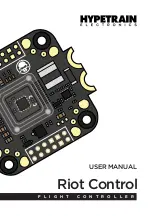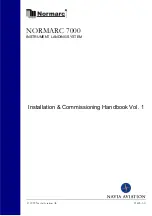
FAA Approved Installation Manual for the
Report No 908
EDM-900 and EDM-930
Page 22 of 55 Rev I
Primary Engine Data Management System
Date 1-18-2013
WARNING
:
Never add or remove fuel from the aircraft when the
master switch is turned on.
Fuel quantity gauge performance is affected by many
factors, such as the integrity of the sensor performance,
the accuracy of the calibration data you collected and
entered and most importantly your validation that the
EDM fuel quantity gauge is accurate and repeatable after
installation and calibration. You should not use the fuel
quantity gauge system for any flight related operations
until this validation criteria has been met.
30.
Voltage Output Type Sender System
Voltage output type systems usually have a convertor box. This is typical with the ‘Pennycap’ brand capacitive
sender system. The Pennycap convertor box measures sender capacitance and converts it to a DC voltage output
signal for the aircrafts fuel level gauge. In some cases the Pennycap convertor box alternately monitors two tanks
per wing controlled by cockpit selector switch positions. This is typical for Cessna’s having 4 selectable tanks. The
EDM can interface to this system with the addition of the dashed interface hardware (PN 790802) shown below.
NOTE: This drawing is accurate for most models of the Pennycap system; however it is the installer’s responsibility
to verify proper connections to the Pennycap output signal.
31.
Fuel Tank Calibration Setting Fuel Calibration Points
The EDM interfaces to various fuel level sensor types to facilitate direct reading of the fuel level in the aircraft fuel
tanks. The EDM has a multi-point fuel calibration table that you must enter. This table contains calibration values
(stored in non-volatile memory) used to translate sensor readings into the displayed fuel quantity values. The
calibration information is collected and recorded on paper for later entry into the EDM. NOTE: Fuel quantity gauges
will not be functional until the fuel calibration information has been entered into the EDM. You will use the EDM
instrument itself as the measuring device to collect calibration data.
The following describes the basic procedures necessary for collection and entry of data into the fuel level
calibration table. Note: Any changes to fuel table data will be temporary until you execute the
’SAVE’
function
(available after last cell of the last tank table is entered).
Before beginning the fuel table entry/edit process, you must have properly installed and tested for correct
functionality of the fuel sensors.




































